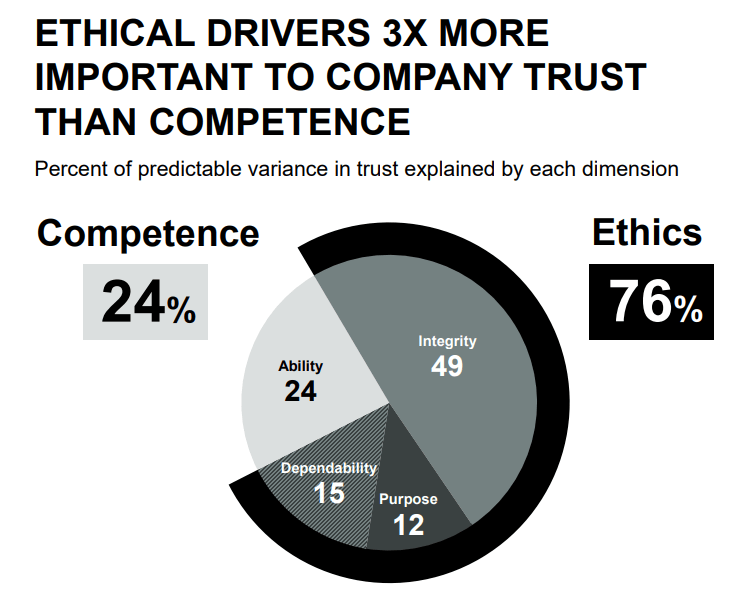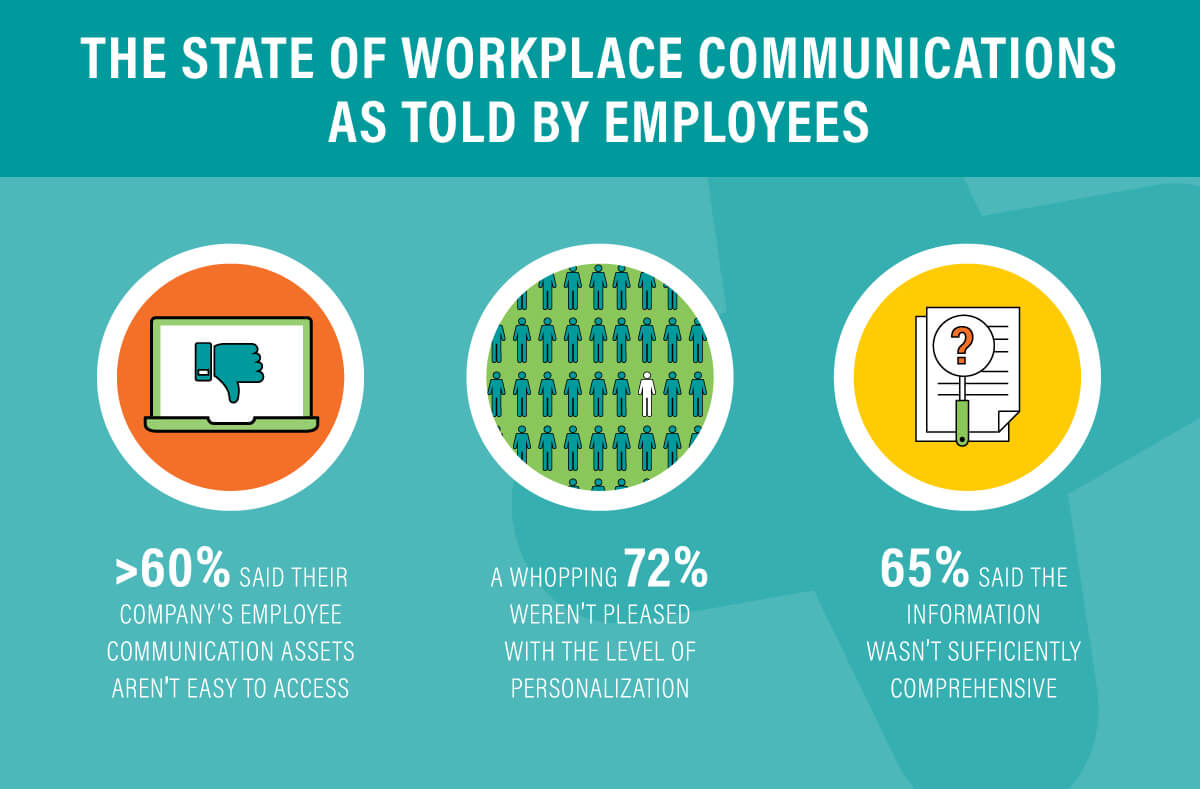There’s no margin for error when building brand trust. Earning consumer trust lowers your marketing costs and improves the bottom line.
Most CEOs and CIOs agree that building trust is essential, but what does that mean? It means eliminating uncertainty by communicating with employees and loyal customers. It takes more than staffing a call center to build brand trust.
As companies grow, draconian policies and apathy sometimes set in. Over time, these erode customer trust and threaten loyalty.
I’ll uncover three areas every company must fix to become a trusted brand. The rewards are plentiful. The cost of not becoming trusted can be devastating.
What is brand trust?
Understanding what brand trust is and why it matters is an excellent place to start.
Brand trust is a measurement of the affinity toward a company or industry. Factors into this include ethics, customer experience, and contributions to the marketplace.
One of the fundamental measurements of brand trust comes from the annual Edelman Trust Barometer.

Before the pandemic, seven out of ten customers stated that brand trust convinced them to stay. It’s likely even higher today.
The only way to attack the obstacles to consumer trust is to understand them in the first place.
Three ways to lose customers’ trust forever
Trust value has decreased over the last few years. There is widespread distrust across the board in government, media, social media, and business. With rising skepticism, brands must deliver consistent, seamless, and timely service.
We’ll review each of these gaps and offer ways to build trust over the long haul.
1) Irrelevant CRM campaigns
Customer Relationship Management (CRM) software powers many essential sales, marketing, and service functions. CRM systems store every interaction between team members and your contacts.
CRMs store valuable pieces of customer data. It tracks digital marketing campaigns, webinars, and even its presence on social media. Even with vast amounts of data, most automated campaigns aren’t optimized for people. The complexity multiplies when it also manages relationships between staff, customers, and partners.
Many automated campaigns neglect that the recipients are real people. They have real concerns and may not fit your ideal customer persona precisely.
When a campaign sends an irrelevant email, it sours the customer experience. All the effort to build the perfect content marketing program goes to waste if you don’t align with your audience’s needs.
Here are the riskiest areas of the customer journey you must check carefully:
- Prospect nurture campaigns
- Welcome/onboarding emails
- Customer support messaging
- Case studies and social proof
- SEO and other content marketing activities
Each of these areas works to set expectations for customers today. Placing too much stock in influencers can limit your brand-building efforts. Your customers right now determine your brand tomorrow through review sites and comments on social media.
At the heart of any effective marketing campaign is the target audience. Your CRM acts as the swiss army knife to nurture your relationships with relevant content.
Practical solutions you can try to build brand trust:
- Clean up your data. Maintaining brand trust starts with proper data hygiene. Clean out old contacts, update preference data, and turn off outdated campaigns.
- Simplify your marketing automation. Marketing automation in today’s CRMs often becomes neglected when it’s complex to manage. Strip the sales pitch down to the essentials for a majority of your audience.
- Improve documentation. Improve the precision of your CRM by asking your customer-facing teams to document every interaction.
2) Omnichannel disintegration
According to a study by Acquia, 90% of people felt brands did not live up to customer expectations. This isn’t a pricing or brand awareness issue. This is an experience problem.
Omnichannel includes all the methods for customers to converse with your team. That includes the phone, web, email, social media, and mobile. Consistency of service is crucial to deliver a consistent customer experience.
Consumers look for convenience and consistency. You can’t have a great sales process and support experience with friction. The truth comes out through online reviews, often in scores of negative reviews.

Your brand’s trust suffers when different contact channels provide inferior customer experiences.
Measuring the success of your omnichannel program includes:
- Call center tools and training
- Social media platform capabilities
- Response times across different channels
Ways to improve multiple contact channels:
- Conduct customer mystery shops. The best way to build brand trust is to audit your contact channels. Go through as if a customer or prospect would: call, text, tweet, and even email.
- Determine if you have a policy or technology challenge. You’ll uncover two types of issues. Decide if you are facing a policy or a technical challenge. Customers should not need to repeat themselves when going through a different channel.
- Adopt an omnichannel platform for your organization. A unified communications system is one of the best ways to treat every customer like a VIP. This will let you accept inbound customer tickets and route them easily and automatically.
3) Poor internal communication
Every company strives for transparent, consistent communication with its team members. The reality is often much different. When problems occur, how well can your team address them?
If your team can solve issues in real time and act on customer feedback, you’re in a good spot. Solving problems and elevating product ideas earn trust in your company’s brand. This falls under employee empowerment.
Signs of conflict show up in employee surveys, customer escalations, and ratings on Yelp and Google. It’s no other leader’s task to solve than the CEO’s because these usually stem from a toxic employee culture.
Nothing fouls up a customer experience more than being unable to solve a problem. Worse yet, employees might be unwilling to elevate them to senior leaders. Sometimes it’s policy. Other times, technology and tools can get in the way.
Also, take a good look at what your employees say about your company on LinkedIn. Are they excited? Are they proud of it? Every employee can affect other areas of the business, like recruiting.
It’s important that thought leaders share an outlook over the long haul for their organization and their team. Word-of-mouth is slowly earned but quickly lost.
Three tips to strengthen team communication:
- Set protocols for channels. Establish a standard of responsiveness across all internal channels. It could be as simple as all internal emails should be actioned within one business day.
- Stress clarity over brevity. Rather than only being short with internal messages, aim to be clear. Ask team members to think about how someone might receive their message when they communicate with each other.
- Encourage digital diplomacy. As remote work becomes the norm, employees might not be aware of their peer’s responsibilities. Additionally, consider setting up a program where your staff listens to customer calls to understand how they can improve the customer experience.

Related: How To Build an Incredible Brand Reputation From Scratch
Business communication tools bring you closer
Customers want to engage with brands using the comfortable medium — social media, email, live chat, phone, and text message. They’re looking for timely service and knowledgeable staff.
Your team should be equipped with a unified business communications system. This improves internal communication and speeds up the resolution of customers’ issues.
Modern communication tools such as personalized sales emails and a business VoIP system can drive up brand loyalty. Don’t look at these as separate channels. Integrate messaging and voice platforms so that critical data is available in real time. They’re all tools to help you build relationships.
Live chat provides many use cases for exceptional customer contact around the clock. It allows for deeper engagement than casually browsing the site. As you attract customers from outside of the United States, you’ll want to adapt your marketing strategies.
It’s easier than you think to bridge the gaps between customer contact channels. When your staff is offline, you can answer questions with an interactive chatbot and capture contact info for follow-up.
Looking ahead: Brand trust will separate the winners
You might not sense it right now, but brand trust will become even more pervasive this year. People see through vain social media marketing ads the substance of company decisions.
Since 2016, millennials have become the largest group of decision-makers. They tend to value experience over dollars alone. Millennials are savvy to see through search engine tricks and unrealistic testimonials. Establishing brand trust is essential to a marketing plan these days.
Building brand trust is a full-time job. It’s not just a fuzzy feeling when sipping a coffee at Starbucks. It’s what will separate the higher-performing companies from the bottom feeders.
We’re in an era of economic uncertainty and distrust. It is the perfect time to look for opportunity. Consumers, like most of us, can feel wary and frustrated. Even the most fantastic marketing campaign can fall flat if it’s inauthentic.
Being authentic and living up to your values allow you to withstand unsettling times and drive brand loyalty.
Brands that optimize their CRM, contact channels, and internal communications are well-positioned to build brand trust — and actually keep it.

















 Leadership
Leadership 








